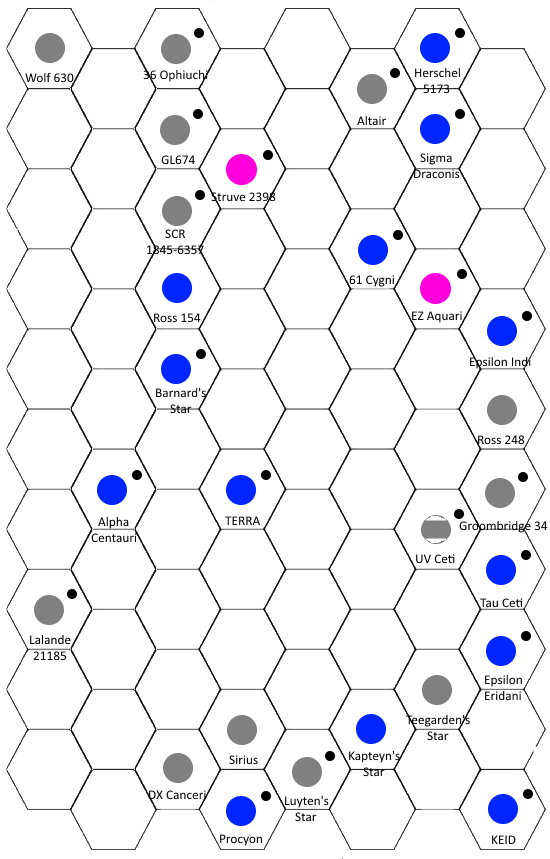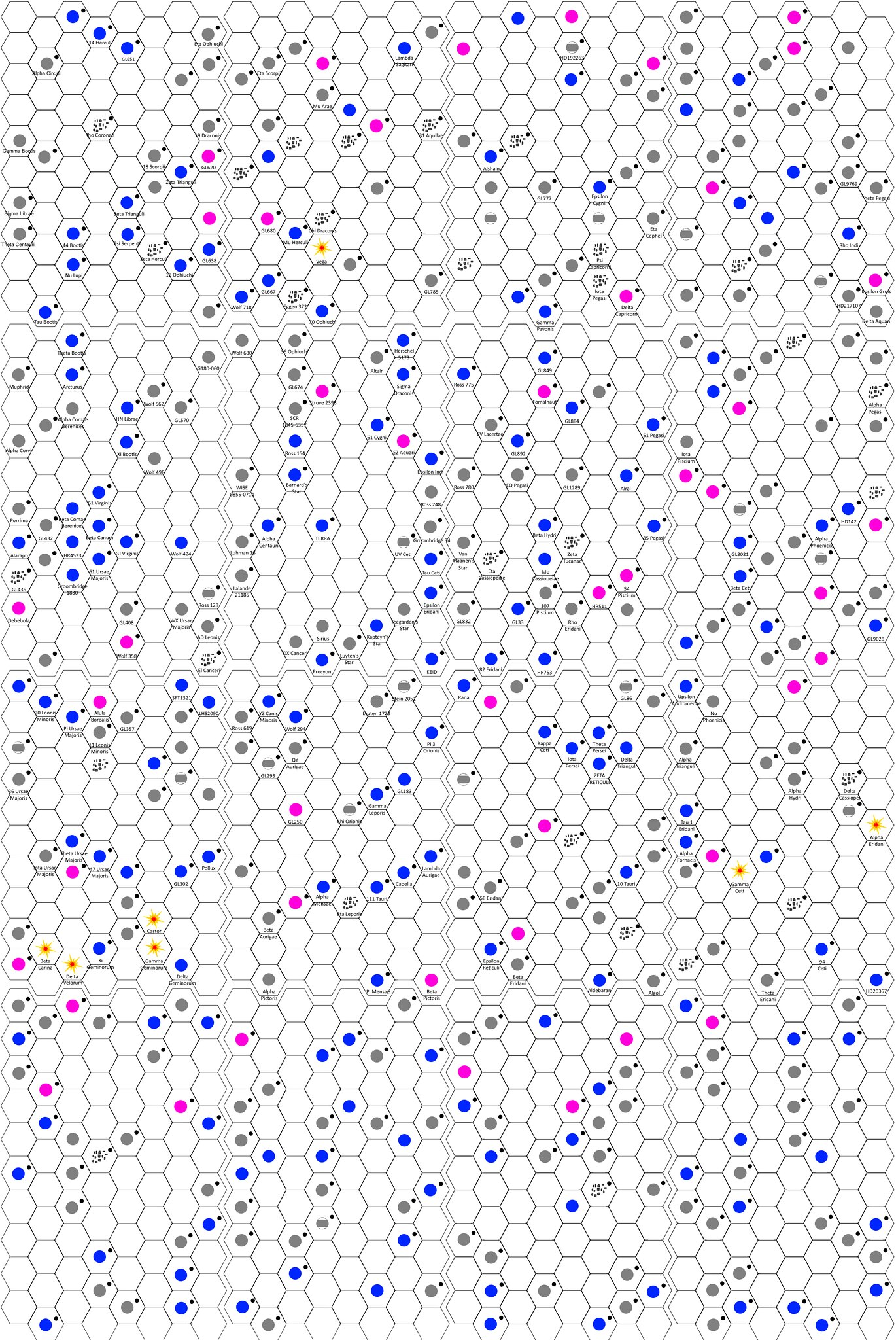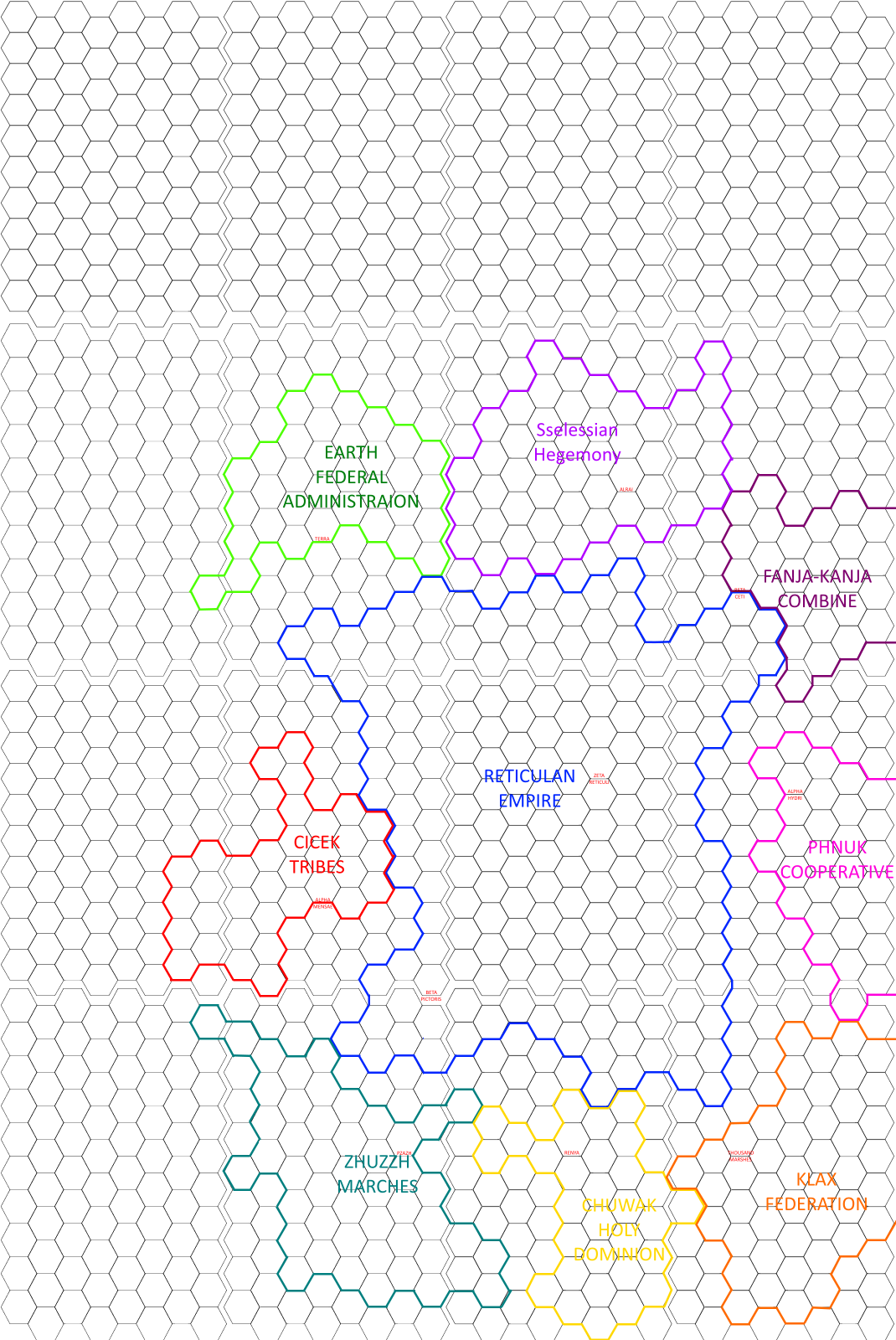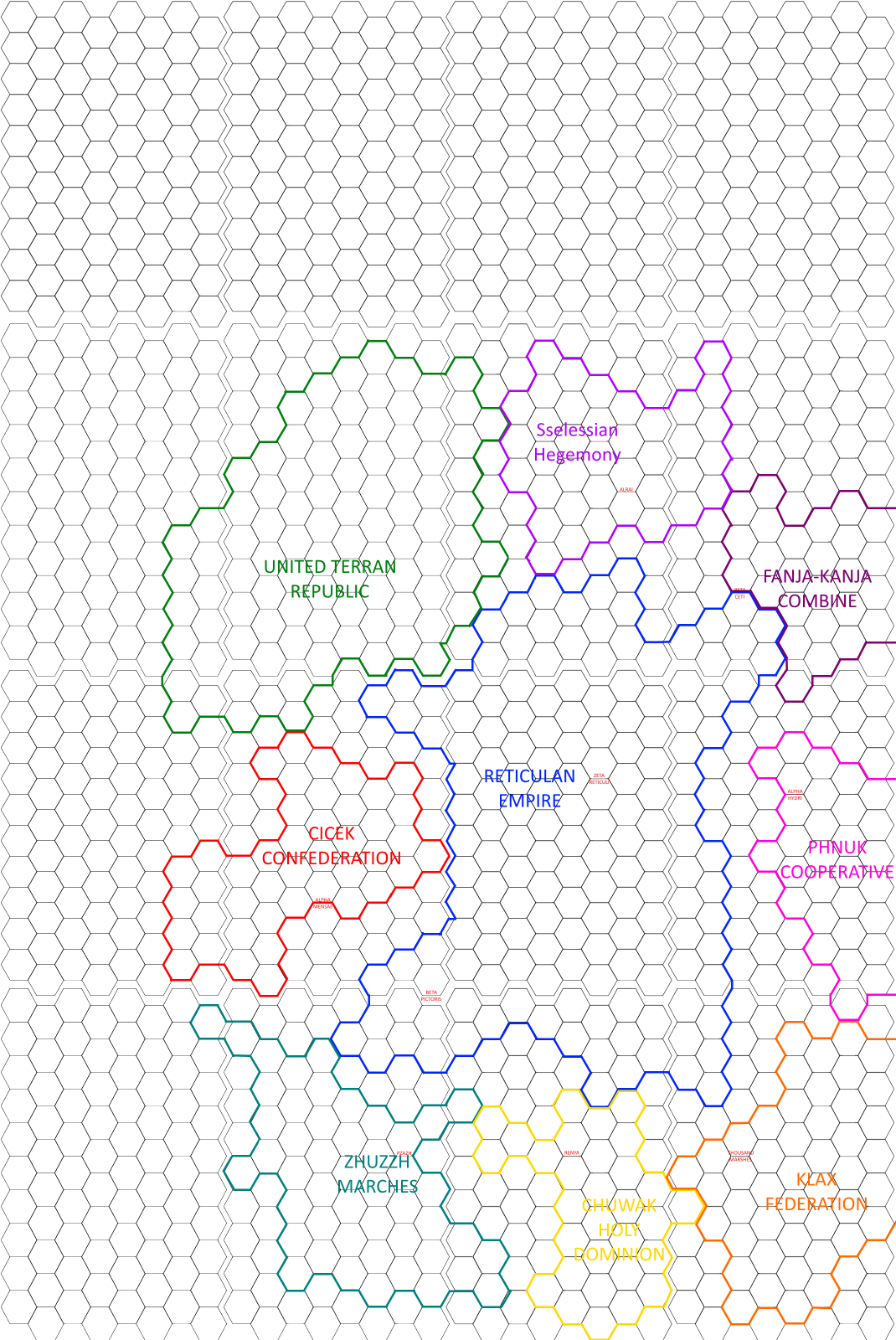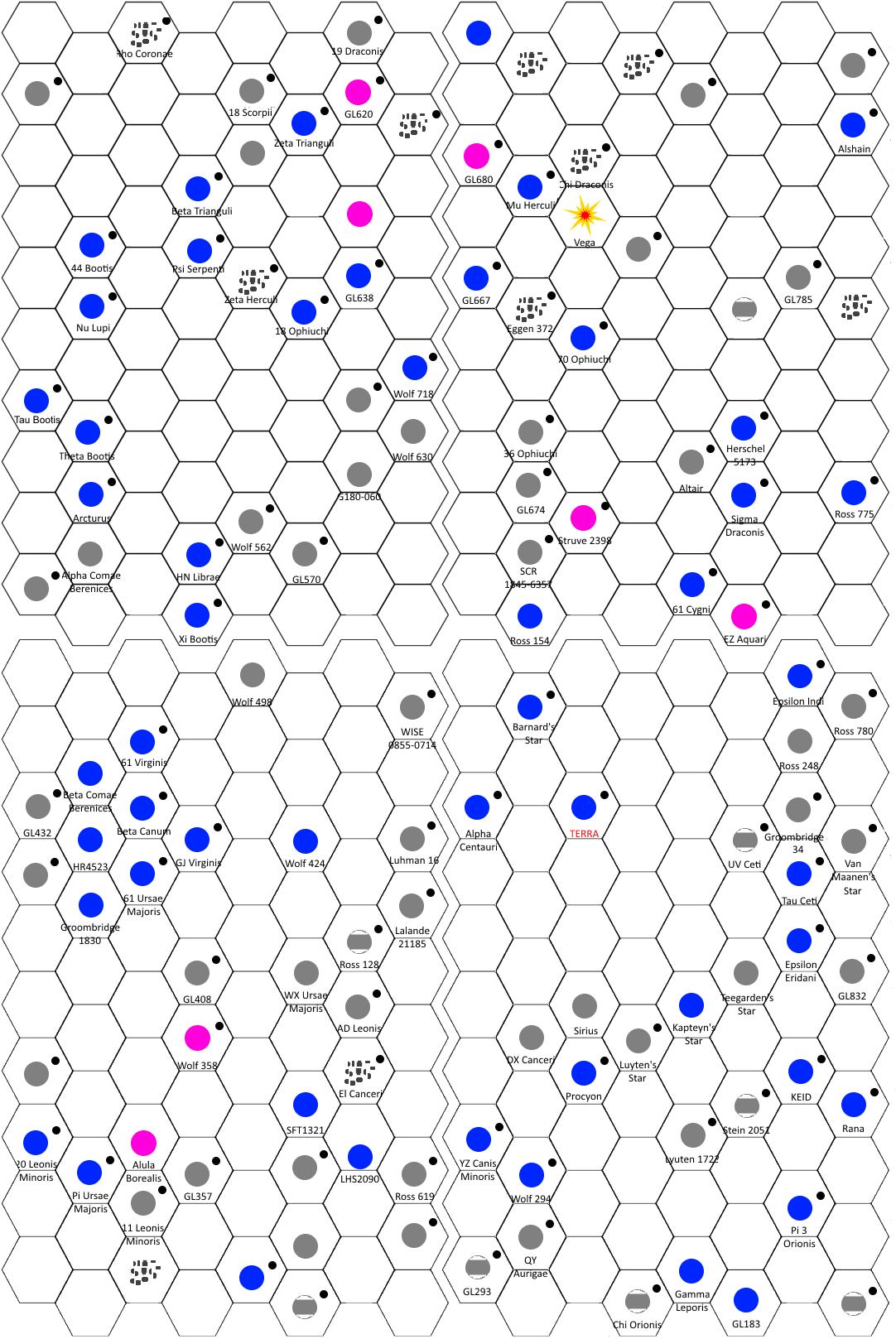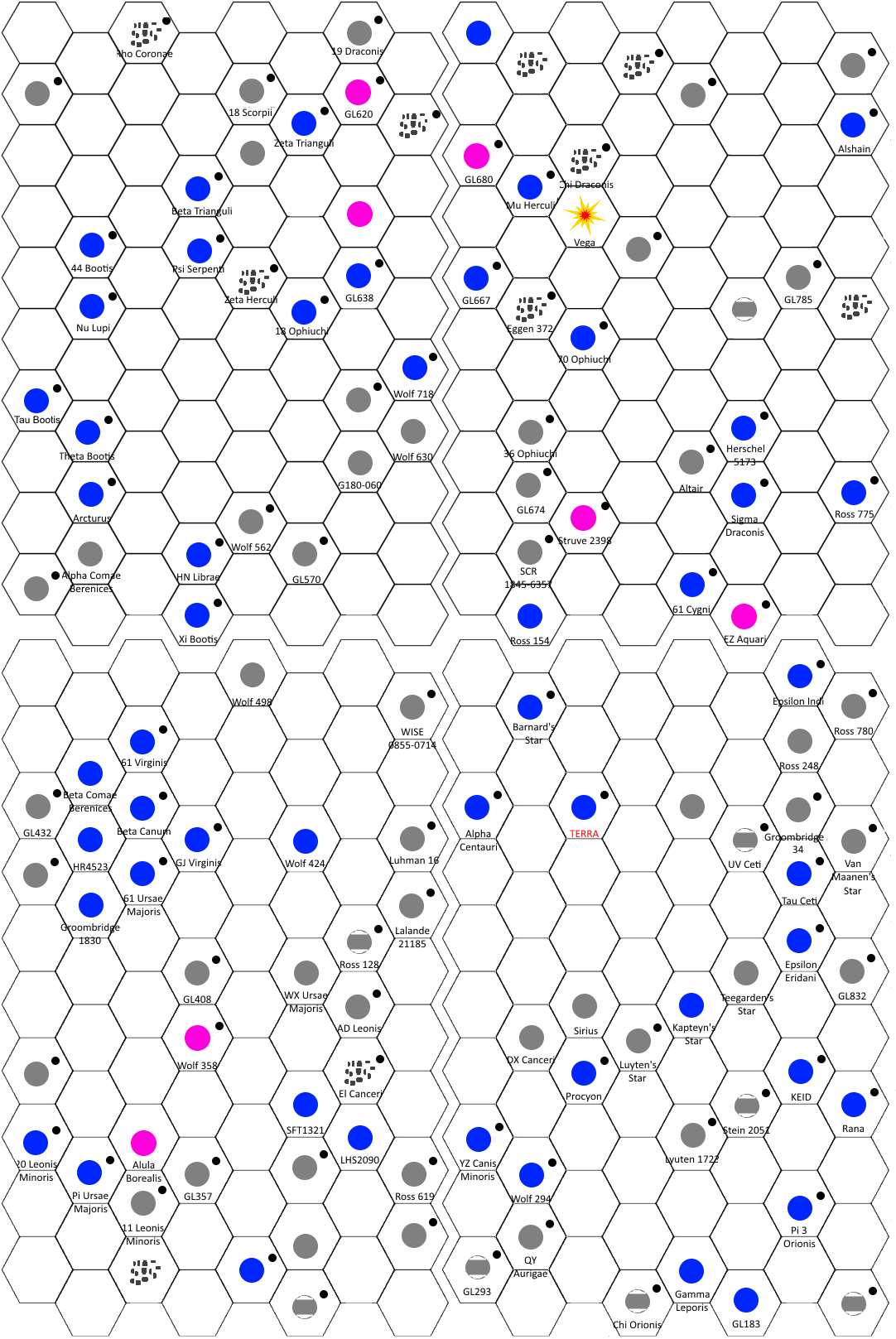LBB3 "realism" house-rules for worldgen in this setting.
-Atmospheres 1 or A+ can only exist on worlds of Size 3+. If not, Size is bumped to 3.
-Atmospheres 2-5 can only exist on worlds of Size 4+. If not, Size is bumped to 4.
-Atmospheres 6-9 can only exist on worlds of Size 5+. If not, Size is bumped to 5.
-If the Population is zero, the Starport is set to X and the Government and Law Level are set to 0; bases are never present with such a low population.
- Barren worlds (i.e. no population) do not recieve the Ni trade code.
- Inhabited worlds with Atmospheres 4, 7 and 9 must have at least TL5. If not, TL is bumped to 5.
- Inhabited worlds with Atmospheres 3- must have at least TL6. If not, TL is bumped to 6.
- Inhabited worlds with Atmospheres A or B must have at least TL8. If not, TL is bumped to 8.
- With rare exceptions (i.e. exotic "Minor Races"), inhabited worlds with Atmosphere C must have at least TL9. If not, TL is bumped to 9.
- Worlds with Starport A must have at least a Population of 5 and TL9. If not, Population is bumped to 5 and TL to 9.
- Worlds with Starport B must have at least a Population of 3 and TL7. If not, Population is bumped to 3 and TL to 7.
-Atmospheres 1 or A+ can only exist on worlds of Size 3+. If not, Size is bumped to 3.
-Atmospheres 2-5 can only exist on worlds of Size 4+. If not, Size is bumped to 4.
-Atmospheres 6-9 can only exist on worlds of Size 5+. If not, Size is bumped to 5.
-If the Population is zero, the Starport is set to X and the Government and Law Level are set to 0; bases are never present with such a low population.
- Barren worlds (i.e. no population) do not recieve the Ni trade code.
- Inhabited worlds with Atmospheres 4, 7 and 9 must have at least TL5. If not, TL is bumped to 5.
- Inhabited worlds with Atmospheres 3- must have at least TL6. If not, TL is bumped to 6.
- Inhabited worlds with Atmospheres A or B must have at least TL8. If not, TL is bumped to 8.
- With rare exceptions (i.e. exotic "Minor Races"), inhabited worlds with Atmosphere C must have at least TL9. If not, TL is bumped to 9.
- Worlds with Starport A must have at least a Population of 5 and TL9. If not, Population is bumped to 5 and TL to 9.
- Worlds with Starport B must have at least a Population of 3 and TL7. If not, Population is bumped to 3 and TL to 7.

